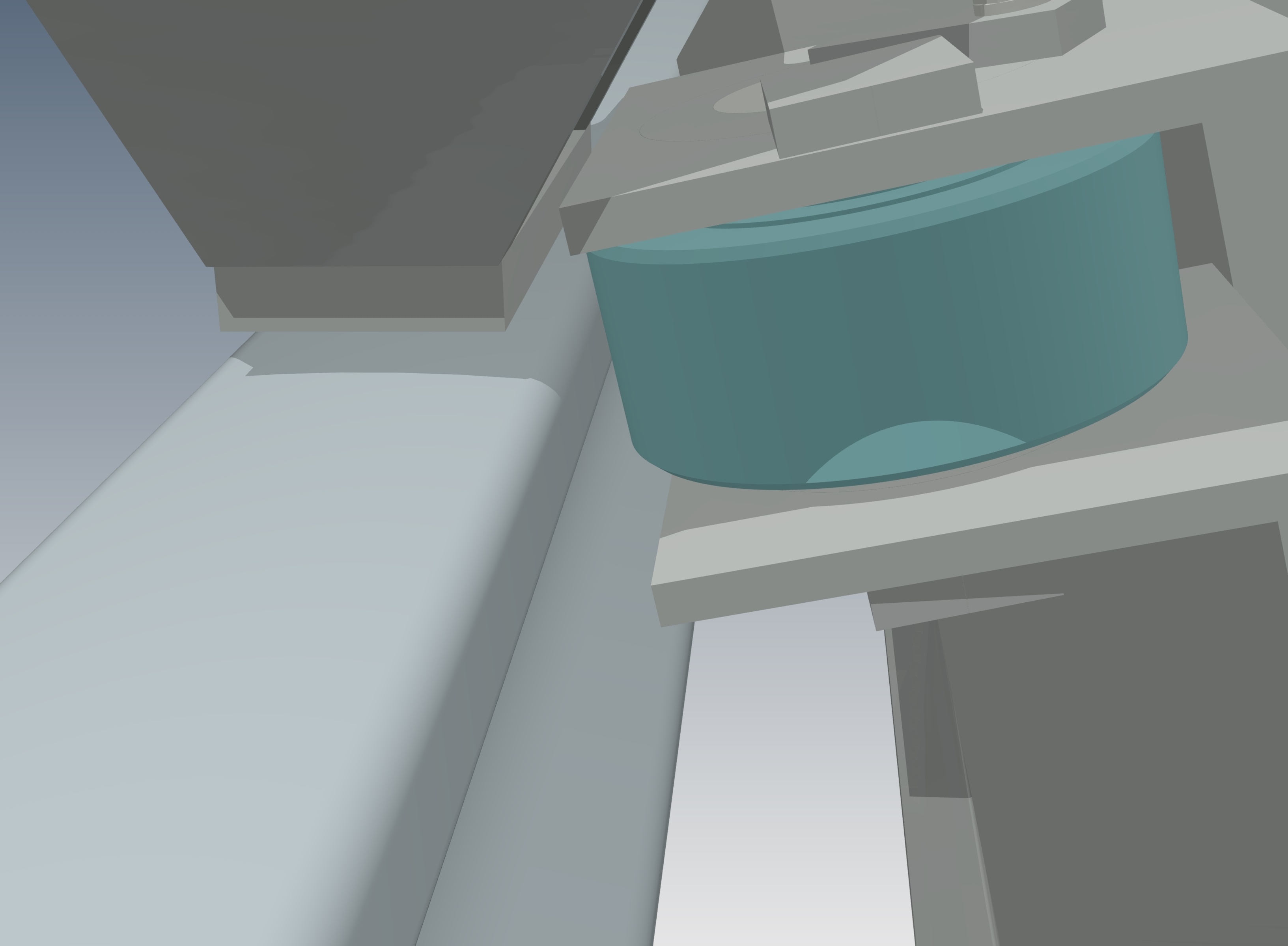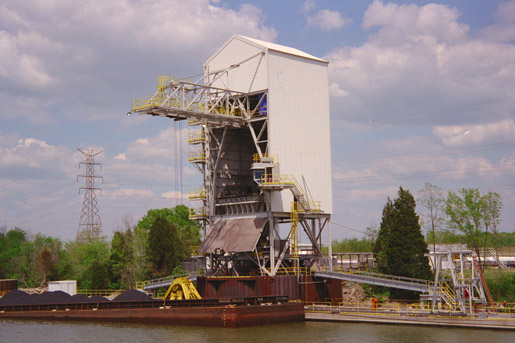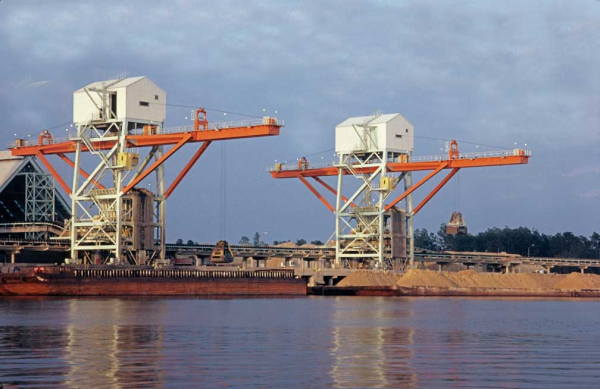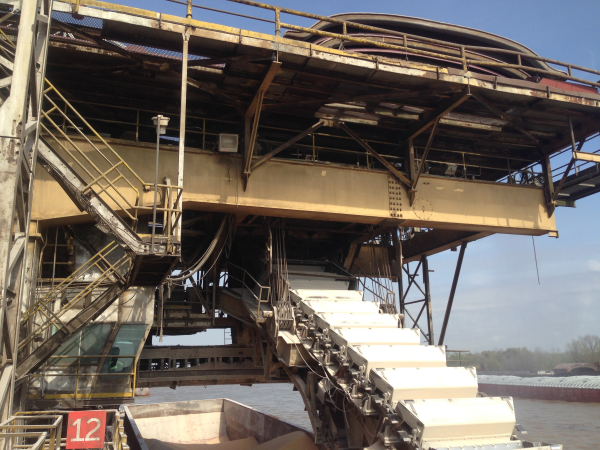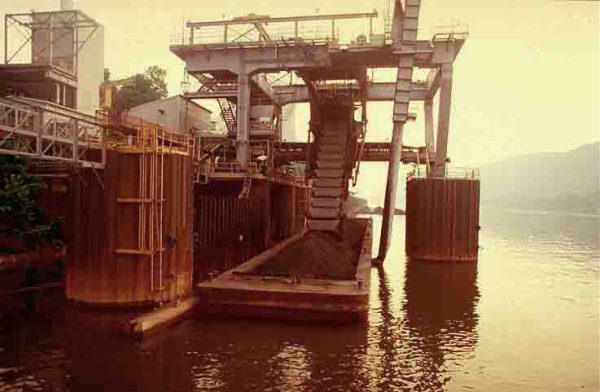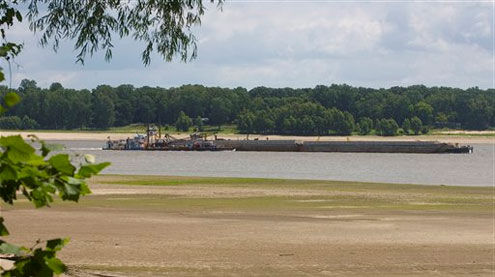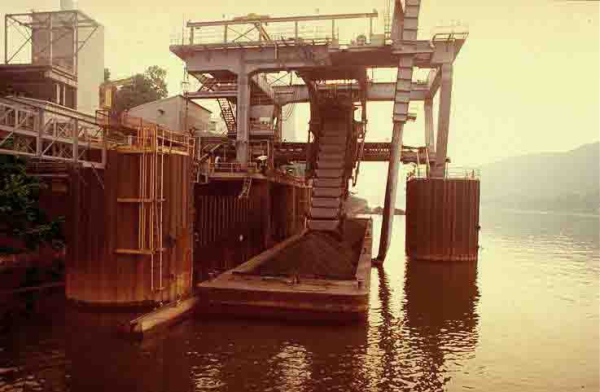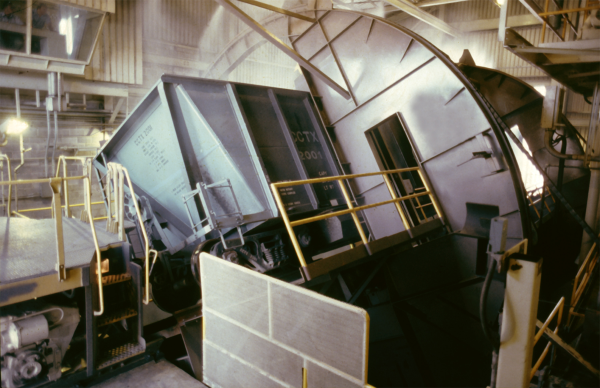Happy New Year! As we head into a new year many of us resolve to be less stressed, more efficient and in the best shape of our lives. Those same resolutions can often be applied to capital equipment. So while you are setting those goals to improve your well-being in 2016, let us review the ways we can improve the life of our equipment. A few simple preventative maintenance items can make 2016 your continuous barge unloader’s best year yet.
Read MoreHeyl & Patterson Blog
Tags: barge unloaders, grain, maintenance, coal handling, continuous barge unloader (cbu), upgrades, inspections
Grab Bucket Barge Unloaders for Efficient Inland Waterways
Posted by H&P Blog on Wed, Oct 28, 2015 @ 10:00 AM
Each year, nearly half a million barge loads of bulk material such as coal, grain, wood chips, crushed stone, sand and minerals travel to delivery points along our nation’s inland waterways. River transportation is the safest and most efficient method for moving massive quantities of materials. Ports and other terminals along the rivers utilize various types of unloading systems to quickly and economically offload the barge traffic that comes their way. One such system for unloading barges is the grab bucket barge unloader.
Read MoreTags: barge unloaders, bulk material handling equipment, coal handling, grab unloaders
Heyl & Patterson Introduces New Barge Unloaders Brochure
Posted by H&P Blog on Wed, Feb 18, 2015 @ 09:20 AM
Since 1887, Heyl & Patterson has designed and constructed efficient, rugged and durable barge unloading equipment for use in bulk material handling. These high capacity machines have solved a variety of unloading problems for many customers across several industries. Diverse cargoes such as coal, corn, soybean, wheat, agricultural by-products, wood chips and limestone can be successfully unloaded. As part of our continuing efforts to update our customers on our product lines, a new Barge Unloaders brochure has been added to the Bulk Transfer Division line of literature.
Read MoreTags: Heyl & Patterson, barge unloaders, grain, literature, continuous barge unloader (cbu), grab unloaders
Prior to the Civil War, cities in the Ohio and Mississippi Valleys such as Pittsburgh and St. Louis were wholly dependent upon steamboats as a means of transporting bulk materials. Even after barges entered service, they were unloaded by hand because unloading machines had not yet been developed. Productivity improved along with technology, and new processes were developed for machinery production and mechanization.
Tags: Heyl & Patterson, trade shows & conferences, barge unloaders, bulk material handling equipment, continuous barge unloader (cbu)
Innovative Zipper Duct Masters Dust Collection From Barge Unloading
Posted by H&P Blog on Wed, Oct 08, 2014 @ 09:39 AM
Dust is a collection of particles in the atmosphere that can consist of anything from soil to pollen to skin cells. In terms of bulk material handling operations, dust mainly refers to tiny fragments of the very materials being transported or transferred. After dust is formed, it causes more wear on equipment components such as bearings, and can create a grinding effect for increased abrasion. It also leads to an increased risk of fire, higher maintenance costs and decreased visibility for workers.
Tags: barge unloaders, ship unloaders, continuous barge unloader (cbu), upgrades, dust collection
The Continuous Barge Unloader in the Grain Industry
Posted by H&P Blog on Wed, May 15, 2013 @ 02:44 PM
In the past, the large export facilities in New Orleans traditionally used unloading devices known as "marine legs." Quite different in size and capacities from the modern Continuous Barge Unloader, or CBU, these machines are equipped with small buckets that travel at high speed. Their maximum capacity is usually in the range of 20,000 to 25,000 bushels per hour, roughly 600 to 750 tons per hour.
Tags: barge unloaders, grain
River Barge Unloading Impacted by 2012 North American Drought
Posted by H&P Blog on Wed, Feb 20, 2013 @ 08:46 AM
The drought-stricken Mississippi River is at its lowest levels in nearly 50 years, which has made barge navigation much more difficult and disrupted the loading and unloading of barges at ports along the river. Ports have become too shallow, and some have required dredging. Companies now reduce their barge loads to avoid bottoming out, using four barges to haul the same amount that three would ordinarily haul, so that the barges sit higher in the water. More barges have meant more trips, leading to increased transportation costs.
Tags: barge unloaders
A few months ago, the Heyl & Patterson blog tackled the competition of the Continuous Barge Unloader vs. the Grab Bucket Unloader, to see which machine was the best for unloading river barges. A grab bucket is a simple enough machine: a clamshell bucket is lowered onto a barge, takes a bite of bulk materials and ascends to deposit its contents into a receiving hopper. However, the Continuous Barge Unloader is far more complex. This article will examine this machine more closely to see what makes it tick.
The Continuous Barge Unloader vs. the Grab Bucket Unloader
Posted by H&P Blog on Wed, Jun 06, 2012 @ 10:41 AM
The first appearance of the Continuous Barge Unloader, or CBU, in the United States was in steel mill applications. Although primarily used for iron ore offloading, the machines also saw early use as coal and coke unloaders. Different styles of CBUs were applied to specific projects as determined by water level fluctuations, barge size and needed discharge capacities. The CBU offered numerous advantages over the traditionally employed clamshell or grab bucket style barge unloader.
Tags: barge unloaders, bulk material handling equipment, coal handling, ship unloaders
Heyl & Patterson to Exhibit at Power-Gen International
Posted by H&P Blog on Tue, Nov 22, 2011 @ 12:25 PM
Power generation comes from a variety of heat-producing sources: oil, natural gas, nuclear, geothermal, wind, solar and of course, coal. The heat boils water and creates steam. The steam, under high pressure, spins a turbine. The turbine interacts with a series of magnets to produce electricity, which is transmitted as moving electrons through a series of wires to homes and businesses.
Tags: Heyl & Patterson, trade shows & conferences, barge unloaders, industrial dryers, coal handling, coal dryers, railcar dumpers






